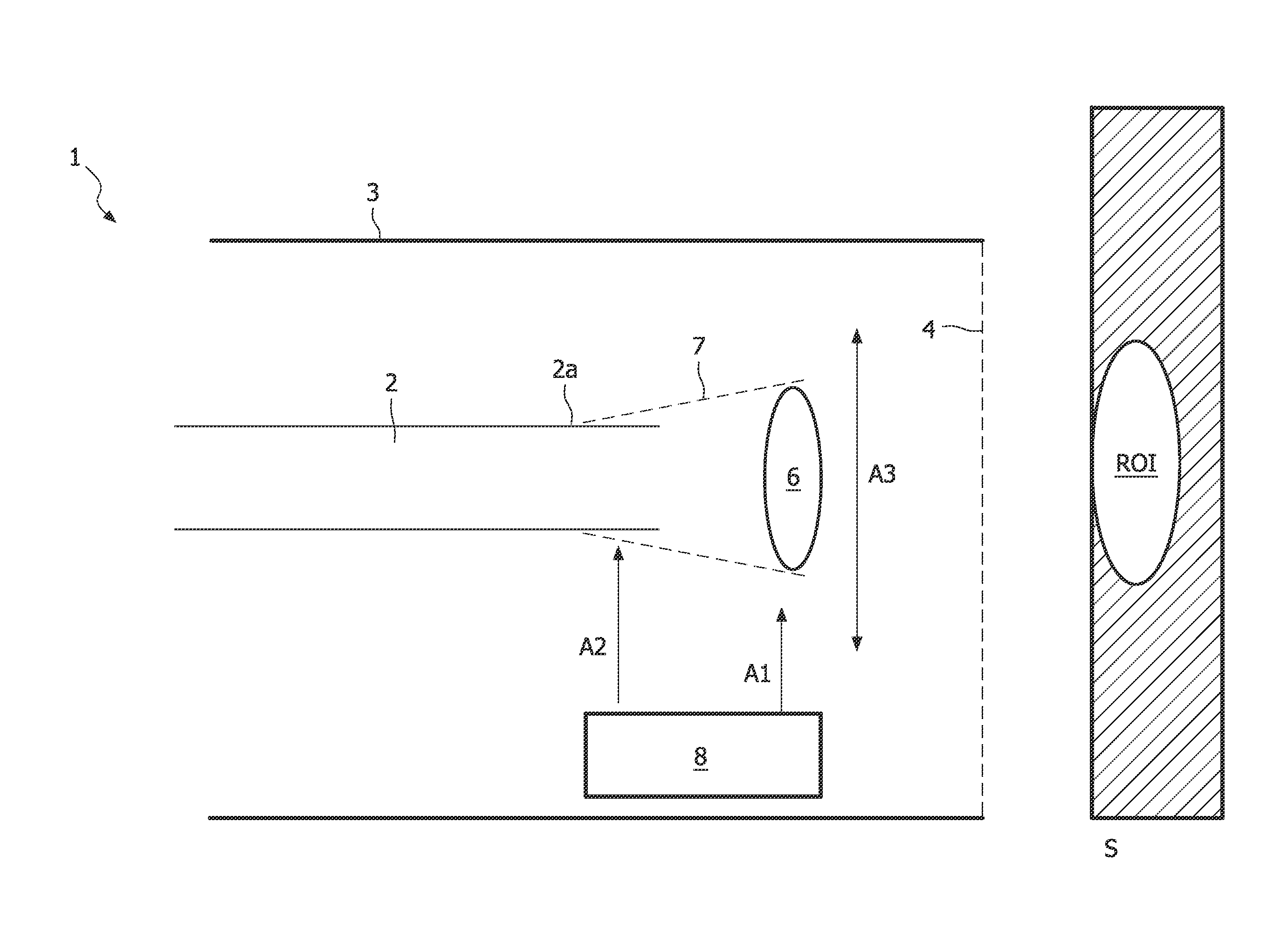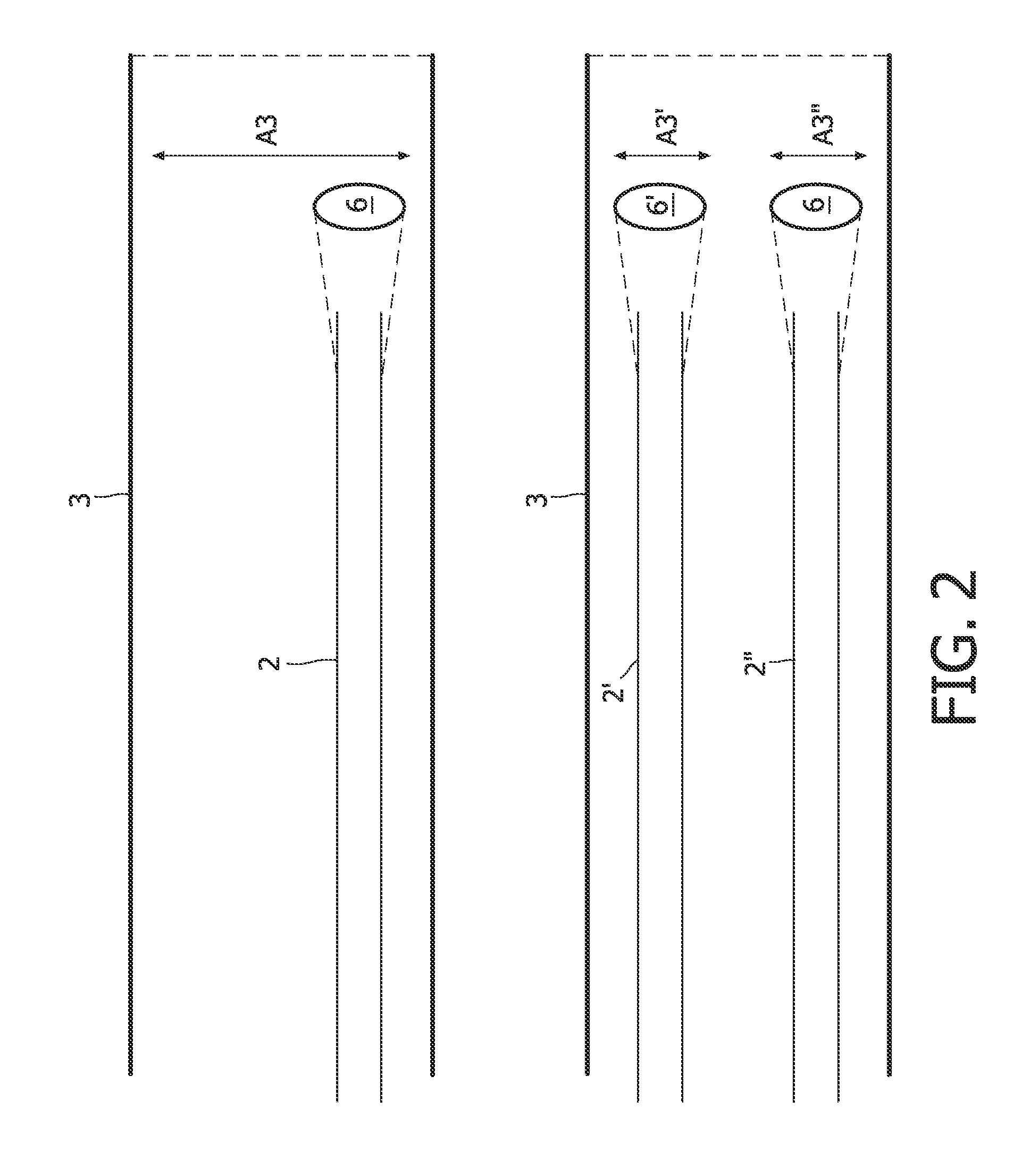Optical probe
- Summary
- Abstract
- Description
- Claims
- Application Information
AI Technical Summary
Benefits of technology
Problems solved by technology
Method used
Image
Examples
Embodiment Construction
[0049]FIG. 1 is a schematic cross-sectional drawing of an optical image probe 1 according to the present invention. The optical probe 1 comprises an optical guide 2, e.g. an optical fibre, and a housing 3 having a cavity wherein the optical guide 1 can be embedded. The housing 3 has at its distal or sampling end a transparent and substantially non-focussing window 4. The window 4 can be a plane section of an optical transport glass or polymer. The window 4 is preferably non-focussing i.e. it has no optical power, but it is contemplated that the window 4 may for some applications have some focussing effect. This is however not usually the case because it may influence the performance of the lens system 6. It is nevertheless contemplated that the exit window 4 in some cases may be a field flattener lens to make the image plain flat and not curved and this requires a small amount of optical power.
[0050]A lens system 6 is rigidly coupled to an end portion 2a of the optical guide 2. The ...
PUM
 Login to View More
Login to View More Abstract
Description
Claims
Application Information
 Login to View More
Login to View More - R&D
- Intellectual Property
- Life Sciences
- Materials
- Tech Scout
- Unparalleled Data Quality
- Higher Quality Content
- 60% Fewer Hallucinations
Browse by: Latest US Patents, China's latest patents, Technical Efficacy Thesaurus, Application Domain, Technology Topic, Popular Technical Reports.
© 2025 PatSnap. All rights reserved.Legal|Privacy policy|Modern Slavery Act Transparency Statement|Sitemap|About US| Contact US: help@patsnap.com



